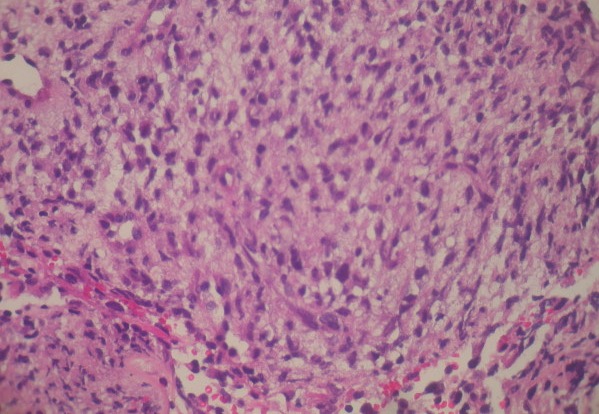Playlist
Show Playlist
Hide Playlist
Leiomyoma vs. Leiomyosarcoma
-
Slides Differentiating Benign and Malignant Tumors.pdf
-
Reference List Pathology.pdf
-
Download Lecture Overview
00:01 Okay. Again, with our broad brush thinking about benign versus malignant. 00:06 What is being shown here is a uterus with attached fallopian tubes and ovaries, everything's labeled there and we're going to compare benign leiomyoma, a smooth muscle tumor of the uterus that's quite common, otherwise known as fibroids. 00:20 And we're going to compare that with malignant leiomyosarcoma, in terms of the features. 00:25 Again, by way of a review, of deciding what's benign, what's malignant. 00:30 So, benign leiomyomas, again, an “Oma” of the “Leio-myo” cells, which are the smooth muscle cells, it's small, tends to be small, but it can be big, they tend to be extremely well demarcated with a capsule around them, because they are slow growing and they're non-invasive. 00:49 And with the exception that I mentioned previously, of that benign metastasizing leiomyoma, they are not metastatic. 00:56 Then again, keep in mind, there are exceptions to everything I’m telling you, I’m lying all the time here. 01:01 And they also tend to be very well differentiated, if you look at them histologically, it looks like smooth muscle, anywhere else in the uterus, so that's benign. 01:12 In contradistinction, when we think about malignant leiomyosarcomas, so, a mesenchymal tumor of these smooth muscle cells, they tend to be large as is indicated here, they tend to be very poorly demarcated, they are invasive, they are not encapsulated, they are rapidly growing with hemorrhage and necrosis as is shown, because they are compressing and otherwise outgrowing their vascular supply. 01:38 They tend to be locally invasive, but they also tend to induce metastases by getting in to veins or lymphatics and the vein being shown here has got a tumor cell, that's escaped from the primary tumor and is going to go someplace else and set up shop and they also tend to be very poorly differentiated, they do not necessarily look like the smooth muscle cells, that they were derived from. 02:04 An important caveat here, most, in fact, the vast majority of benign tumors, do not convert into malignant tumors. 02:15 So, fibroids are incredibly common, these leiomyomas incredibly common, but almost never, do they turn into leiomyosarcomas. 02:27 The leiomyosarcomas that occur in the uterus, tend to be de novo mutations, that cause that malignant tumor. 02:35 But there really isn't a pathway from benign to malignant, in the smooth muscle cell lineage or in a lot of other tumors, where there are benign versions. 02:45 So, for example the lipoma, that we talked about before, benign fat cell tumor, almost never, almost never converts into a liposarcoma. 02:56 Okay and with that we've come to the end of benign versus malignant and hopefully you're not totally confused.
About the Lecture
The lecture Leiomyoma vs. Leiomyosarcoma by Richard Mitchell, MD, PhD is from the course Surgical Pathology of Tumors.
Included Quiz Questions
What is a leiomyoma?
- A benign tumor
- A tumor with an irregular infiltrating margin
- A reactive process that may have a focal hemorrhage
- A tumor that tends to be large
- A rapidly growing tumor
What is a leiomyosarcoma?
- A poorly differentiated tumor
- A benign tumor
- A tumor that usually arises from a leiomyoma
- A tumor that typically occurs in skeletal muscle
- A tumor that can occasionally revert to being a leiomyoma
Customer reviews
5,0 of 5 stars
| 5 Stars |
|
5 |
| 4 Stars |
|
0 |
| 3 Stars |
|
0 |
| 2 Stars |
|
0 |
| 1 Star |
|
0 |




